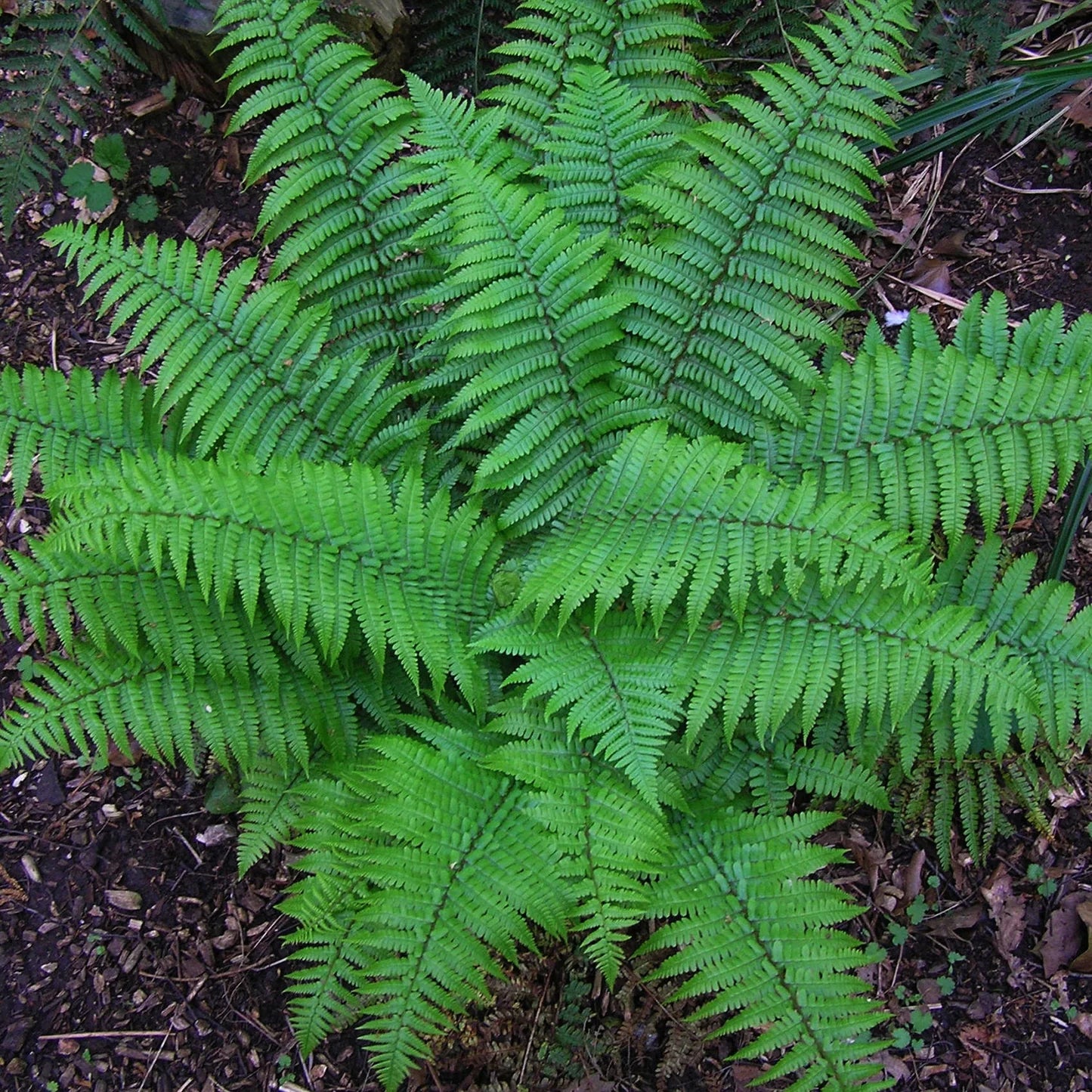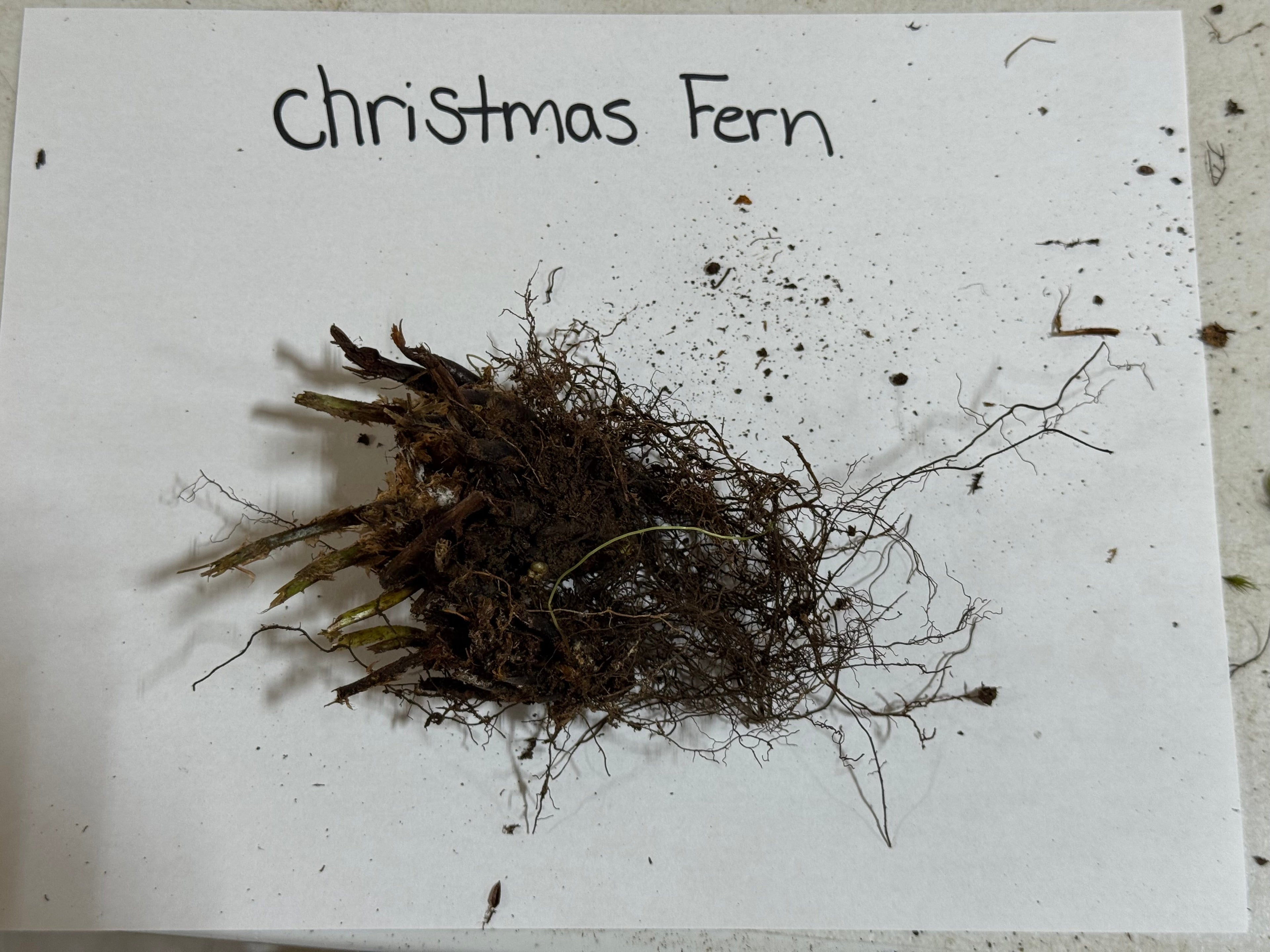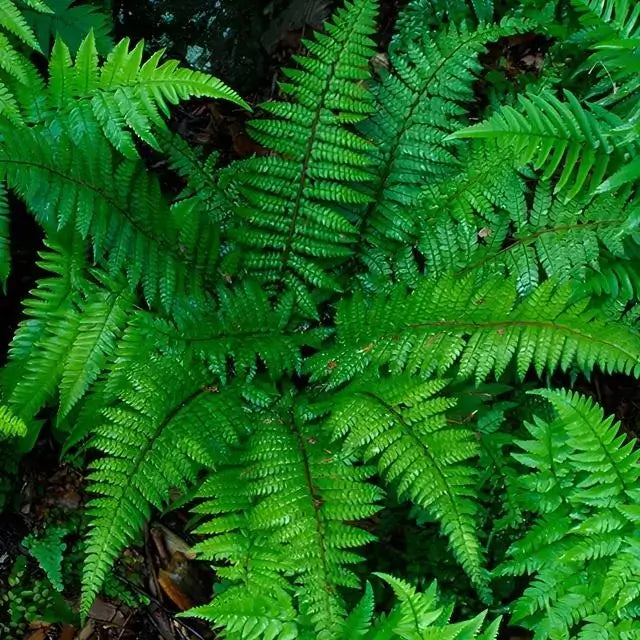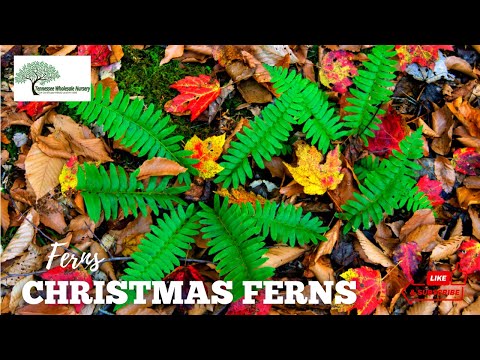Christmas Fern Is an Evergreen Native Fern Favorite
The Christmas Fern (Polystichum acrostichoides) is a timeless native fern that brings year-round greenery to shaded gardens and natural landscapes. Unlike many ferns that fade with the seasons, this hardy plant retains its deep green fronds throughout winter, adding life and color when most plants are dormant.
Its name comes from this evergreen quality, as its foliage often appears fresh and vibrant during the Christmas season. With arching fronds that grow in clumps, the Christmas Fern offers a lush, woodland appearance that complements shade gardens, borders, or naturalized areas beautifully.
Why Gardeners Love Christmas Ferns
This fern plant is prized for its attractive appearance and ease of growth. This native fern thrives in planting zones 3-9 and adapts well to various soils, particularly in exceptionally moist, well-drained spots with dappled or full shade.
The fern is a low-maintenance and pest-resistant plant, making it an excellent choice for gardeners who want beauty without the fuss. Its dense root system also helps control soil erosion, making it practical for slopes and woodland edges. It works as a ground cover, accent plant, or natural companion to shade-loving perennials and wildflowers in landscapes.
Planting and Care
They establish best when planted in cool, rich soil with good moisture. Once settled, they require little upkeep beyond occasional watering during prolonged dry spells. Unlike some ferns, they stay well-behaved and do not spread aggressively, making them easy to manage in small gardens and extensive natural plantings.
Whether used to add structure in a shaded border, as a natural carpet under trees, or as winter interest in a woodland garden, this fern is a reliable performer year after year.
Order Christmas Ferns from TN Nursery
At TN Nursery, we grow and ship healthy acrostichoides plants ready for planting in your landscape. These native evergreens offer lasting charm, strong adaptability, and dependable performance in shade gardens. Order today and bring home a fern that stays green every season, living up to its name as one of North America's most beloved evergreen ferns.
What makes the Christmas fern evergreen?
The fern keeps its deep green fronds year-round, even through winter. Its sturdy leaf structure and natural cold tolerance allow it to stay lush when many other plants go dormant.
Where does the Christmas fern grow best?
It thrives in partial to full shade. Woodland areas, shaded borders, and understory plantings provide the cool, filtered light conditions that Christmas ferns love.
What type of soil does the Christmas fern need?
The ferns prefer moist, well-draining soil rich in organic matter. Adding leaf mold or compost helps mimic the forest floor conditions in which they naturally grow.
How often should I water a Christmas fern?
Keep the soil evenly moist, especially during the establishment phase. Once mature, the plant tolerates short dry periods but still benefits from consistent moisture.
Does the Christmas fern spread?
It forms tidy clumps rather than spreading aggressively. Over time, the clump becomes larger and fuller but remains well-behaved in garden settings.
Can Christmas ferns handle cold winters?
Yes, they are naturally cold-hardy. Even in freezing temperatures, the fronds often stay green, adding winter interest to woodland gardens.
Are Christmas ferns suitable for erosion control?
They are excellent for stabilizing slopes and shaded banks. Their fibrous root system helps hold soil in place while the foliage provides ground coverage.
Do Christmas ferns attract wildlife?
They offer shelter for small woodland creatures, and their dense clumps provide valuable cover in shaded habitats, though they are not typically a significant food source.
Are Christmas ferns deer-resistant?
Yes, Christmas ferns are generally deer-resistant. Their coarse texture makes them far less appealing to browsing animals.
How big does a Christmas fern get?
Most mature clumps reach 1–2 feet tall with an equally wide spread, creating a soft, arching form that complements shaded landscapes beautifully.
Exposure
Shade
Height at Maturity
Over 2 Feet
Usage
Shade Plant
Shipped As
Bare-root
Ships
USPS
Planting Zones
3-9





